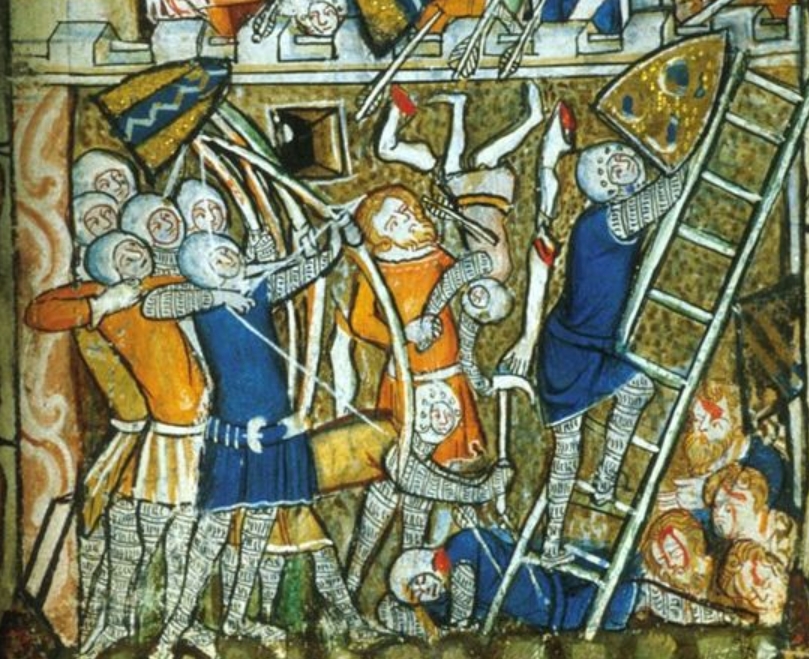When you make a plan to kill a public person, the kind of public person who is animated by a powerful inner force, you’d better make sure to kill him. But even if you succeed there’s that powerful inner force to deal with: what if, by killing him, you just let it out?

The problem is an ancient one, and by ancient I don’t just mean Episode IV: A New Hope. Even older, if you can believe it! I mean the actual history of Julius Caesar, as narrated in Plutarchs’ Lives.
Plutarch tells a great life of Caesar; you can’t help admiring the sheer force Caesar’s confidence or the way it inspired others to support him. But when it comes time to narrate Caesar’s death, after telling how the conspirators struck Caesar down at age 56 on the Ides of March, Plutarch adds this rather supernatural coda:
However, the great guardian-genius of the man, whose help he had enjoyed through life, followed upon him even after death as an avenger of his murder, driving and tracking down his slayers over every land and sea until not one of them was left, but even those who in any way soever either put hand to the deed or took part in the plot were punished.
It’s not quite “great Caesar’s ghost” at work, but some kind of animating spirit (μέγας δαίμων, great guardian-genius) that accompanied him throughout his life. By killing Caesar, his enemies had separated the spiritual force from the man. And it was made: It chased them down one by one, and took revenge. Cassius killed himself with the very dagger he killed Caesar with. There was a comet in the sky for seven nights. The sun was dim all year, and crops suffered. And a phantom of Caesar did in fact appear to Brutus repeatedly, right up until his battlefield death.
That’s how stories like this are supposed to end: You don’t get away with killing somebody who was so full of a mysterious, history-changing life force. That inner power is released, and it comes for revenge, to overpower you, to kill you back. And it’s implacable, everywhere at once, extremely thorough in exacting its vengeance.
The story of Jesus has enough similarities to this plot that it would be reasonable to expect a similar ending. If you blur your eyes and pretend you don’t already know the details, you can see the continuity: Killing Jesus didn’t stop the power that was inside him; after his death, that power seemed to be turned loose in the world to do its thing more comprehensively than ever.
But that’s not quite how it goes with the death of Jesus. For one thing, unlike Rome’s J.C., this one actually comes back from death, which is probably a plot point worth considering. Try to ignore that for a minute. Just think about what the power that animated Jesus does when, after his death, it breaks out and blows across the world like a mighty, rushing wind.
The Spirit of Jesus doesn’t chase down its enemies and bring them to death by poetic justice. That’s how this kind of story is supposed to end. The suspense of Holy Saturday, considered by normal standards, ought to be the suspense of wondering what kind of vengeance the angry ghost of Jesus is going to carry out when it sets to work on Sunday morning. We have good reason to expect the final reel of the film to be violent.
But this is where we have to quit pretending we don’t know how this story ends. Jesus rises from the dead, never to die again. The Spirit that animated his life is not some nebulous guardian/genius, but the Holy Spirit by whom he, the incarnate Son of God, was filled as he “went about doing good works” (Acts 10). When that Spirit got to work, it filled the followers of the risen and ascended Jesus with the boldness and power to proclaim not vengeance for what was done to Jesus, but forgiveness of sins because of what was done by Jesus.
There have been forms of Christianity that failed to hold to this plot line; one particularly ugly tradition dreamed up a way of telling the story that really did feature Jesus carefully working out the destruction of Jerusalem as revenge. A medieval poem called Titus and Vespasian tracks the story through three decades of intrigue until Titus of Rome lays siege to Jerusalem in 70 A.D.; in this fantasy version, he does it explicitly and by commission in order to take revenge on the Jews.

When you read Titus and Vespasian, you notice (a) that it’s a very creative exercise in fabulation, inventing and connecting an international cast of characters –which is perversely encouraging: it takes some work to turn the Easter story into a revenge plot! and (b) that it assimilates the plot of the Jesus story to what we might call the standard, worldly plot, more like the Caesar story: angry ghost gets bloodthirsty vengeance. Seeing the story twisted in this direction is startling. That’s not how it goes! That’s how you would make the story end if you didn’t understand where the story was going all along.
Never mind how this kind of story is supposed to end, according to all available conventions. There are extra elements in the Easter story, and they establish a different plot arc. The suspense of Holy Saturday doesn’t pay off in yet another revenge story, but in something perpetually new and surprising in our weary, predictably violent world. Jesus rises up, gives the Spirit freely, and then the life he lived miraculously begins to be lived by his followers. His followers tell the surprising story, with an emphasis on its meaning: forgiveness in the name of Jesus to all who believe.